Growing veggies and other plants can be a pleasurable and profitable hobby. Decent soil and just some plants are needed to develop healthy vegetables. But if you want to make a living as a home gardener in Oklahoma, you’ll need to study the best ways to ensure your crops thrive.
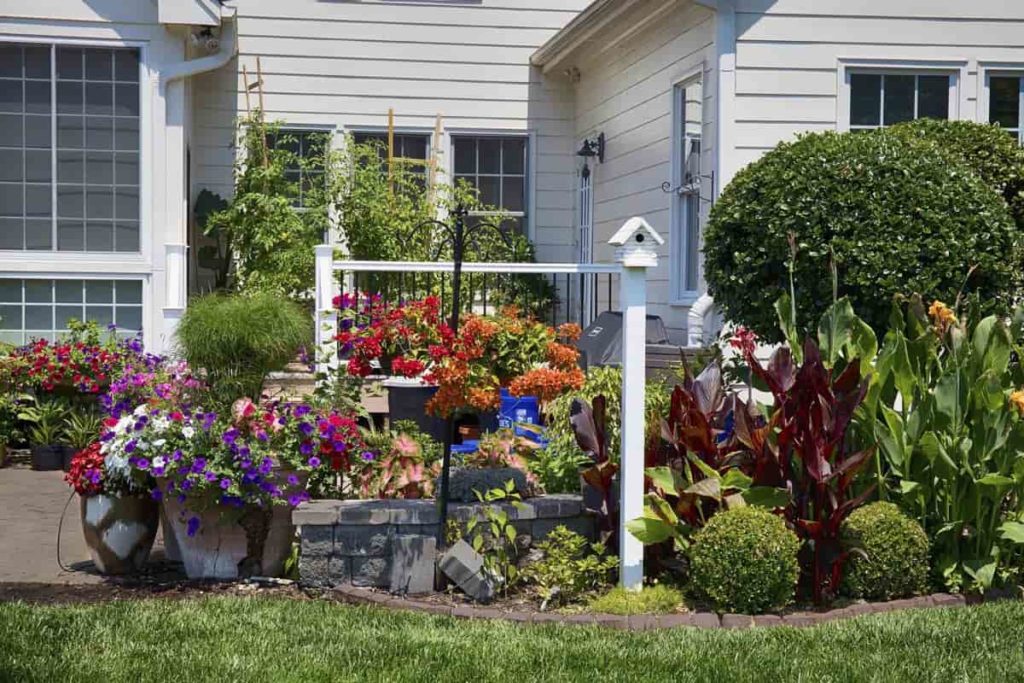
Below we learn about Oklahoma home gardening, how to set up a home garden in Oklahoma, how to set up a backyard home garden in Oklahoma, how to set up a container home garden in Oklahoma, about indoor home gardens, and the best fruits and vegetables to grow in Oklahoma home gardens.
Home gardening in Oklahoma (OK)
When should I start my garden in Oklahoma?
In southern portions of Oklahoma, hardy garden veggies can be planted early in February. Planting dates for hardy and semi-hardy plants that survive mild frosts and low temperatures are between February 15 and March 10; the earlier dates apply to the warmer southern regions. Vegetables including cabbage, peas, carrots, cauliflower, onions, lettuce, and potatoes fall within this group. In March, you can grow plants like beets, broccoli, and spring asparagus.
Springtime temperatures of about 70 degrees Fahrenheit each day will be ideal for these plants. After the final frosts have gone in late April or mid-May, fragile and extremely tender crops and annual flowers can be planted. Tender vegetables like okra, cucumber, beans, pepper, pumpkin, eggplant, summer squash, and even tomatoes can be planted around April 10 — or a little later in the north as part of this planting cycle. Annuals that overwinter inside, such as petunias, impatiens, and snapdragons, may also be planted at this time.
Vegetables more susceptible to damage, such as cantaloupe, southern peas, winter squash, sweet potatoes, and watermelon, should not be planted until after May 1 or as late as mid-June, depending on your latitude. Annual flowers that thrive in hot conditions, such as petunias, zinnias, and nasturtiums, should also be planted. Spring and October are ideal times to grow fruit plants. It’s not too late to start planting autumn veggies, even if you’re harvesting summer crops.
Start autumn planting around the middle of July, which is also the best time to plant new tomato transplants for harvest in the fall when the weather is cooler, and the plants thrive. Also, now is the time to sow a new crop of hardy vegetables that can be harvested until, in some cases, even beyond the season’s first frosts. You can sow seeds for beans, cilantro, corn, sweet pumpkins, cucumber, and summer and winter squash in mid to early July. Around July 15, you should plant your seedlings of eggplant, pepper, and tomatillo.
When circumstances are better, gardeners can sow a second crop of hardy crops. To enjoy these vegetables throughout the autumn, plant broccoli, brussels sprouts, kohlrabi, turnips, and cabbage in early September. Planting garlic early in September results in a spring crop. However, you should plant your spring-flowering bulbs in the middle of October or early November, up to the first frost. Pansies and snapdragons, cool-weather annuals, can brighten any fall landscape.
What vegetables grow well in Oklahoma?
Lettuce, kale, chard, green onions, snow peas, summer squash, tomatoes, beans, melons, pumpkins, winter squash, potatoes, okra, corn, and eggplants grow well in Oklahoma.
In case you missed it: How to Grow Berries in USA: At Home in Pots, Containers, Indoors, and Tips
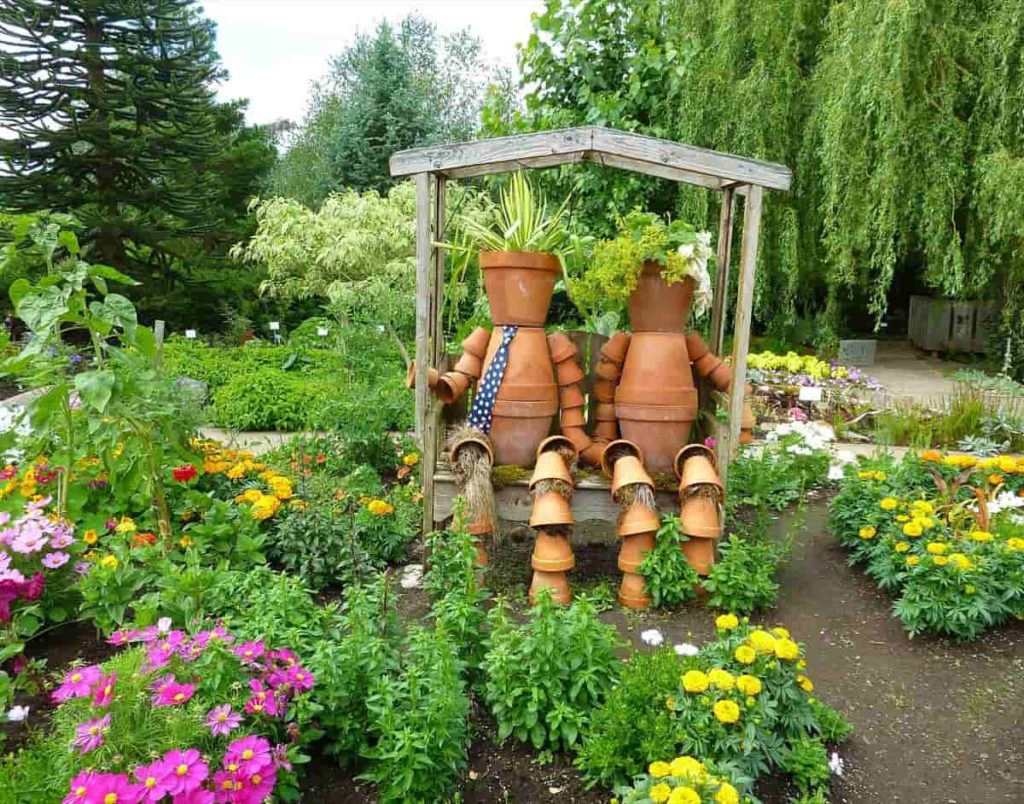
Is Oklahoma good for gardening?
Some people may believe gardening is impossible in Oklahoma because of the heat and harsh weather. Still, if you know what to do, the environment in Oklahoma is favorable for many types of plants.
Can you garden year-round in Oklahoma?
You can start many different plants in Oklahoma, even in the winter. In zone 7, it is not impossible to grow vegetables throughout the whole year. Now is the time to seek plants, seeds, and seedlings to sow for a spring garden.
Do you typically consider the planting season to be in the summer or sometime around May? Many things are planted in the ground during that time, but you can also plant many things in the winter. As Oklahoma’s spring and autumn seasons are so brief, you need to get an early start if you want any cool-season crops to be successful. If your plants are well-established and mature in April, you’ll enjoy a nice Spring crop before the heat kills them.
What zone is Oklahoma for gardening?
The USDA has been publishing a plant hardiness map since 1960, and it has been an increasingly important aspect in determining the success of plants in different regions of the country. The average severe winter low temperatures recorded over time are used to create hardiness zones on the planting map. A 10-degree interval delineates zones in the state.
Oklahoma has five different climate zones: 6a, 6b, 7a, 7b, and a little bit of 8a in the southeast. Knowing your zone is essential if you’re a seasoned green thumb or a complete gardening newbie—several more characteristics impact plant success in a particular place. Humidity, winter sun, wind, and microclimates that generate warmer pockets are all examples. Use the Oklahoma plant map as a reference, but remember to only plant species that have been deemed “safe” for your specific zone.
What month do you plant tomatoes in Oklahoma?
Planting tomatoes in the garden requires warm weather and soil temperatures of at least 60 degrees Fahrenheit. Southern Oklahoma often experiences these circumstances around the 5th of April, whereas northern Oklahoma typically experiences them around the 25th of April. Temperatures lower than 50 degrees Fahrenheit inhibit the development of tomatoes.
How often should you water tomatoes in Oklahoma?
It is essential to water the tomatoes, so the soil is uniformly wet without becoming soaked. Tomatoes in Oklahoma need to be watered at least once or twice every week when the temperatures spike. If you let them dry out, your yields will suffer, but if you water them until they are completely saturated, you will contribute to blossom end rot. Sprinkle 2 tbsp.
When should I start a container garden?
The month of May is the time to put together pots and containers that will be used for the remainder of the growing season. Tender container plants can look fantastic towards the end of October if they are protected from an early frost; thus, it is worthwhile to invest some time and money into getting them exactly perfect since they are not only for the summer.
Which crops grow well in containers?
Tomatoes, peppers, beans, lettuce, eggplant, green onions, squash, radishes, and parsley are some vegetables that do very well when grown in containers. Other options include green onions. Even while pole beans and cucumbers thrive in this garden, they still need a significant amount of additional area due to their vining growth behavior.
How do you start a backyard garden for beginners in Oklahoma?
Choosing an ideal location
Don’t forget these four factors while picking a location for your garden. Think about how much light you’ll need before you begin. Most vegetables need anything from six to eight hours to fully mature. More sunshine means a more fruitful crop. Is a yard area that only gets morning or evening sun preferable to all-day light? The dew on the leaves will dry off in the morning sun, making them less vulnerable to fungus.
How far away is the garden from the house’s water tap? Without the ability to control their water intake, many plants would perish. And for that, you’ll need a water supply that won’t freeze throughout the growing season. The water supply shouldn’t be kept too far away to prevent your garden from drying out. The airflow should also be taken into account. Fungi cause many leaf diseases. Fungi cannot infect plant leaves if exposed to adequate air circulation.
Obstruction from a fence or building can prevent air from circulating. Consider the garden’s closeness while choosing a spot. Backyard gardens are often neglected. It’s essential to place your garden in an area where you’ll see it often to inspire you to care for it. These four primary variables determine a backyard garden’s placement. Backyard gardens need 8 hours of sunlight daily and regular watering and airing. The population thrives when these conditions are met and fungal infections are reduced.
Soil preparation in your backyard
Oklahoma has various soil types, each suitable for different purposes depending on where you reside. They can range from dry and sand-like to rocky and shallow, moist and peat-like, or sticky and sand-like. There is a wide range of root, water, and weed interactions among soil types. Some are harmful to a plant’s growth. Less water is retained in sandy soils as opposed to clay ones. The soil should be moist enough to disintegrate under pressure without becoming waterlogged so that it cannot be worked.
The best soil conditions are a moist environment and good drainage. In contrast to fertile soil, rock and pebble-dominated substrata often lack essential nutrients. You can still grow plants without buying potting soil, even if high-quality soil may be difficult. Amazing results are still attainable by only employing the soil in your garden. It is possible to clean up even the worst soil. Organic matter should be added to improve the soil’s ability to support plant growth.
In case you missed it: Top 25 Vegetables to Grow on Raised Beds
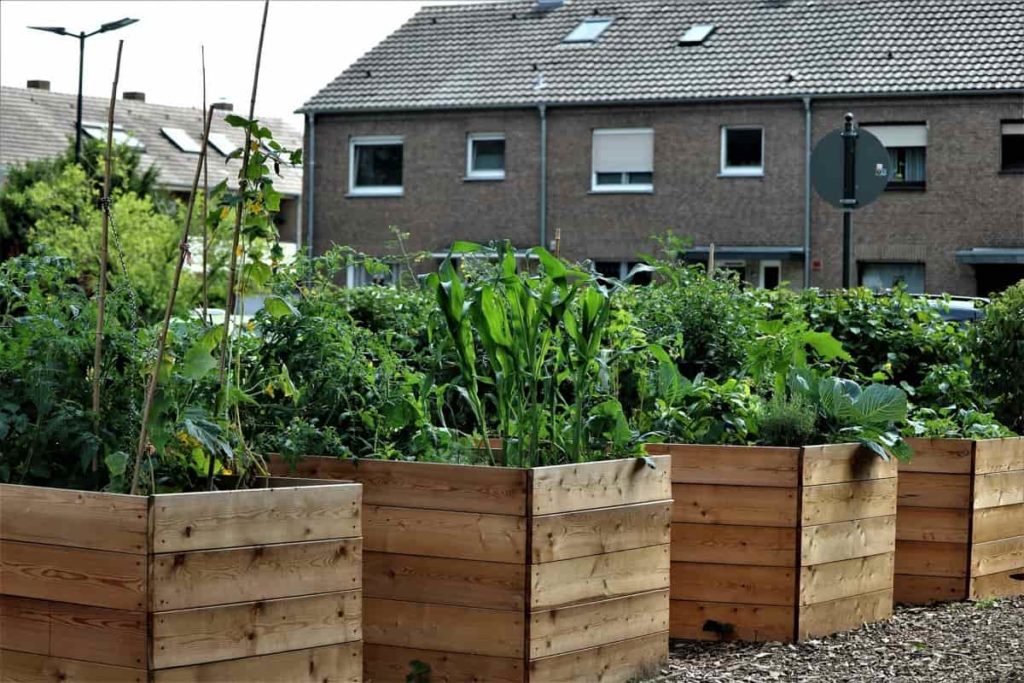
The soil quality can be improved as well, making digging easier. This method might lessen the negative impacts even when dealing with difficult terrain. Soil treated with organic matter is more conducive to plant growth because it loosens clay and improves sand’s ability to retain water. By incorporating organic materials, soil quality can be enhanced. It’s simple to make compost from yard garbage. Before planting, make a potent fertilizer combining soil, air, and water with nitrogen and carbon-rich components.
Grass clippings, leaves, and straw are all examples of plant material. First, create a mulch pile. This is because it might take a long time for plant pieces to decay after they have been mixed into the soil. If you start now, you can finish in time for spring. Add a layer of composted manure to the soil before you plant. Most experts recommend against using raw manure since it may harm plants and introduce illnesses into the soil. Pick composted manure instead.
Plant the backyard garden
Before sowing seeds directly into the ground, scrape the area to break up any clumps of soil; straight rows reduce the work required to keep your garden weed-free. Small stakes can be linked together with twine to create straight rows. Plant seeds by the planting directions provided on the seed packs. Press lightly on the row with your hand when fine soil has been worked over the seed. Spray the seeds instead of soaking them.
Separating the rows by at least 30 centimeters is recommended, and more space is needed for larger vegetables. Planting too many seeds in one area is simple, so proper spacing is essential. More room is required for growing large plants instead of small ones. Size may seem like a good indicator of a plant’s maturity, but this isn’t always the case. Before planting seeds, you must decide how large your plants want.
You never know what a little seed can do, whether it grows into a massive tree or sends its roots far down. Visualize yourself as a plant and think about the ideal environment for your growth. Check the seed packet or online to discover how much area the plant needs. There is no universal rule for the number of plants of a specific size.
It might take years for novice gardeners to realize they planted their crops too closely together. Why? Because it’s usually difficult to predict how big a plant will become in its ultimate environment. Maybe you feel like there’s too much room between each plant. Still, the gift of space represents a chance for growth. Overcrowding plants can create difficulties as they age and run out of room.
Water your backyard garden
Once a week, an inch or two of water is a good rule for watering your grass or garden. It’s better to water deeply and seldom than to water often yet superficially. Think about the basics before anything else. Sandier soils tend to lose water at a faster rate than their clayier counterparts. The ability of soil to drain quickly and hold moisture for a longer period is improved when the clay content is reduced.
Good soil holds some water but drains very swiftly and easily. Mulch may also lessen the water required to water grass throughout the growing season. Weather affects how much water plants require. In hot and dry climates, plant watering frequency increases. Once it starts raining, there is no need to water the plants anymore. Watering patterns for plants are also established. As they continue to develop, plants have a similar need for water as they were originally planted.
Most vegetables, bedding plants, and flowers in the Oklahoma region require daily watering owing to their shallow root systems until temperatures hit 85 degrees Fahrenheit (29 C.). Most pot plants require daily, and in some cases many times daily, watering to be alive and thriving, particularly in hot and dry conditions. You should also try to match how often you water your plants with when they will get the most sunlight.
Morning watering reduces evaporation loss, but afternoon watering is OK, provided the leaves aren’t soaked. Roots can expand and strengthen with enough water. As a result, you need to water your garden twice weekly, giving it a total of around five centimeters and two inches of water at each session. Watering your plants too often without giving them a good soaking will promote faster evaporation and stunt their root growth.
Overhead sprinklers are often designated for lawns due to the high volume of water lost through evaporation. Rinse the plant’s roots but avoid putting water on the foliage using a soaker hose or drip watering system. Small gardens and potted plants can be hand-watered.
Manage pests and diseases in your backyard
Unwanted insects and animals are more likely to jeopardize your garden’s well-being than weeds. Moles and gophers are two types of creatures that like to eat plants and dig holes in the ground. A regular appointment with an exterminator is something you should do if you want to keep the number of pests in your home under control.
Aphids and the larvae of other insects might potentially cause damage to your plants if you do not respond quickly enough. You may pick pests by hand if your plants are in a pot. If you want to keep the insects away from your bigger beds, you should run a trickle of water over them daily. They won’t be able to devour your plants if you do this to stop them. In addition, check each of the plants in the garden to ensure that none exhibit any signs of illness or stress.
When plants are under stress or have been injured, the likelihood of their being infested by parasites increases; the consequences are the same for diseases caused by fungi. To stop the proliferation of a fungal disease, you should get rid of any plants that are significantly affected. Spraying pesticides should only be done as a last option.
How do you start a container garden for beginners?
Choosing ideal containers
Size, material, and the ability to drain excess water are all factors to consider while selecting a pot. To grow healthy plants, give them enough area in the container. Choose a pot that won’t be too small to accommodate the plant after it’s fully grown. For the container to function, water must be able to escape. Waterlogged soil fosters the growth of bacteria and fungus, decreasing plant productivity or killing the plants.
In case you missed it: Home Gardening in Georgia(GA) for Beginners: How to Start from Scratch for Indoors, Outdoors, Raised Beds, Backyard, and Containers
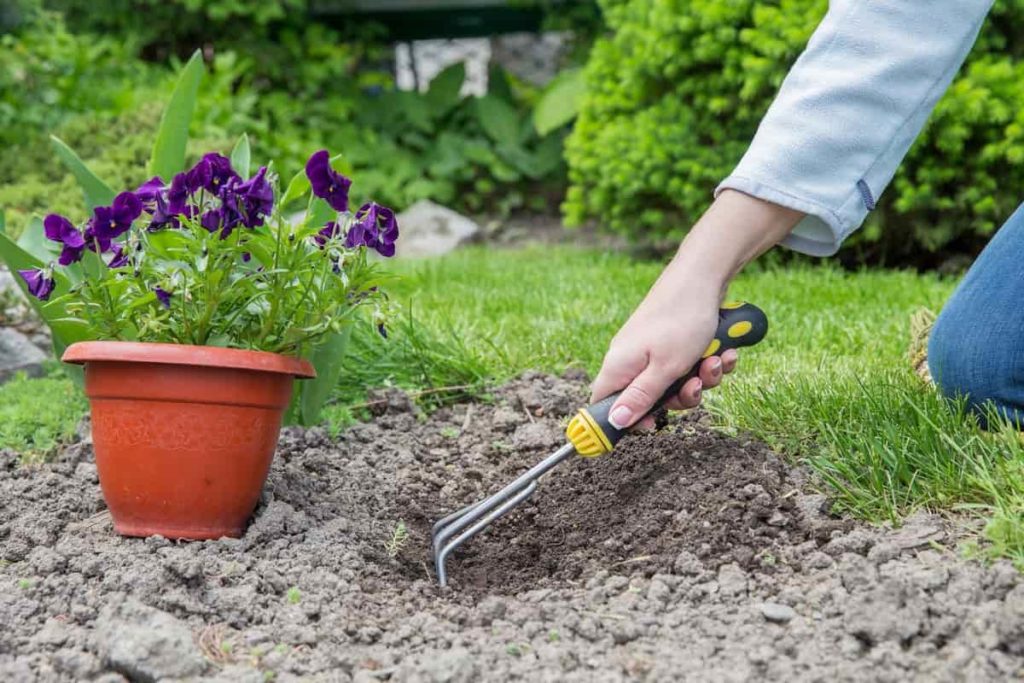
For example, gardeners in arid regions might choose containers with higher moisture retention capacities, while those in humid regions can opt for ones with more open pores. What kind of weather you have will determine this. The health of your plant’s roots depends on their ability to spread out. Most vegetable gardening requires a depth of at least 12 inches of soil. A 5-gallon pot is recommended for growing heavier plants like tomatoes and squash, but a smaller pot will do for growing lettuce and other shallow-rooted greens.
Large containers can be hard to transport and too heavy to store on a balcony. However, smaller containers need more upkeep during hot weather since they dry out more rapidly during travel and adaptation. The kind of materials used to make the container is a crucial factor. There are many different containers, each with pros and cons. There are many containers, including plastic, terracotta, and cloth ones.
Selecting plants for your containers
The needs of all plants in a given container must be met to ensure their health. Most plant species that grow during the warmer months need six to eight hours of daily sunlight. However, some fruits and vegetables can survive in partial shade when the temperature is too hot to thrive in full sun. Some cool-season vegetables grown with as little as three to five hours of daily sunshine in partial shade are beets, carrots, kale, lettuce, and spinach.
From May through September, vegetation flourishes. Most vegetables need uniform and consistent watering. Applying water directly to the soil will prevent soil from splashing onto the foliage. Heavy feeders like cucumbers, squash, and tomatoes need more fertilizer than other plants to flourish. Most fruits do better with indirect or filtered light, especially during the warmest portions of the day.
Since the plant needs nutrients to develop fruit, moderate to heavy fertilization is required for a good yield. Most plant species thrive in low light levels and limited nutrition environments. While some plants thrive in damp conditions, others may go weeks or months without water if kept in a container with good drainage.
Plant your container garden
When adding plants, give their nursery containers a little squeeze to dislodge the root ball in each one. The plant can suffer damage if you pull on it. It is recommended that the root balls of your plants be positioned so that they are just a few inches over the lip of the container when they are put in the potting mix. This makes it simpler to water the plants.
Backfill the empty spaces around the plants with potting soil, taking care that the plant stems don’t go much deeper than they did in their original containers. To prevent air pockets from forming around your plants, gently push the soil around them.
Water your container plants
Due to the greater exposure to sunshine and wind, the soil in containers dries up more quickly than in conventional gardens or raised beds. It can be necessary to water some of your potted plants up to twice a week throughout the summer, particularly on the hottest days. It is feasible to rinse plants in containers using hoses, watering cans, or drip irrigation. Choose the best method for your restricted garden area.
When you get up in the morning, it is essential to water any plants inside containers. When you water your plants first thing in the morning, you guarantee they will have enough moisture to make it through the warmest portion of the day. The hydration plants need at their roots cannot be supplied by simply spraying the soil with water from the hose.
Be sure to give the plant a good, long, and thorough soaking whenever you water it so that you don’t risk the water not reaching the plant’s roots. Be careful to water your plant until the water runs out the bottom of the container. It is more detrimental to a plant’s health to water it often with little water than to water it seldom with a significant amount. Also, if you overwater your plants, their roots will become shallow and weak, urging you to water them less often.
Fertilize your container garden
When water is rushed through storage containers, nutrients are lost. In addition, this process flushes out beneficial salts in the soil. As a result, container plants need more frequent feedings to replenish nutrients than their ground-planted counterparts. Start the gardening season with a slow-release fertilizer in potting mixtures.
Feed the plant liquid fertilizer twice a month while growing, flowering, and fruiting. Checking your soil’s nutrient levels to determine whether you need to add extra is a risk-free endeavor. Fish emulsion or compost may enrich container soil with essential micronutrients.
In case you missed it: Oklahoma Container Gardening: Beginner’s Guide for Vegetables, Fruits, Herbs, and Flowers
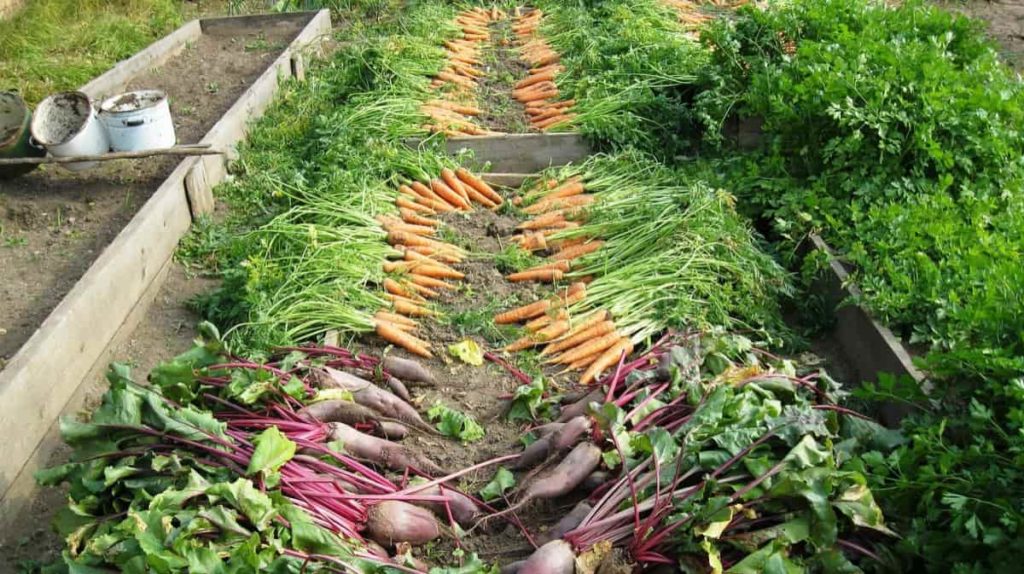
Manage pests and diseases in your container plants
Because they are contained, plants in containers are less likely to be attacked by pests than in gardens or yards. However, they are vulnerable to bugs, diseases, and other problems. Insects and fungal spores continually float around in the air, threatening any garden they land on. Always check the plant’s vitality before purchasing. You should wash them gently before planting. It’s essential to use dust-free potting soil and clean containers.
Tools should be cleaned exactly like hands. The sick plants have had more than half their leaves eaten away, so pull them out. Be cautious of pests while you water. Look at the backs of leaves, where pests and their eggs may hide. The first step in fixing an issue is pinpointing what kind of bug it is. That way, instead of spraying the plant with different pesticides to see what works, you may zero in on the pest management methods most effective suited to your unique situation.
You must learn your limits. The objective is pest management, not eradication. If the leaf margins are nibbled on, it won’t be the world’s end, but it is something to think about. If using pesticides is unavoidable, be mindful of the risks to people, animals, and the environment. Disease might be conveyed to your plants if you have a persistent pest problem in your garden, such as spider mites, aphids, or whiteflies. For effective elimination of these pests, try using natural pest management methods.
What is a good soil mix for container gardening?
Planting media for containers can be purchased or made, but it is essential to choose your resources wisely. Heavy, dense soil kills plants. Some garden soils don’t drain well and cut off the oxygen supply to plant roots. Thus, they shouldn’t be used. There are a wide variety of potential garden pests, including weed seeds, diseases, and insects, in garden soils. Several soil-free combinations are now on the market.
Often, a nutritional supplement is included as a preliminary fertilizer in these pest-free, pH-balanced formulations. Mixing a gardener’s soil using compost, perlite, coarse builder’s sand, vermiculite, pasteurized soil, or potting soil is possible. In most circumstances, buying a commercial soilless mix will be faster, easier, and more accurate. If you have specialized needs like the ones mentioned below, it may be best to order a special soil blend.
In the absence of a timed watering system, supplement the soil with vermiculite and compost to ensure the plants get enough moisture. Soil and sand should make up no more than a third of the total. Plants like lavender, rosemary, oregano, and thyme thrive in dry environments, so you may make the soil mix even more porous by adding perlite.
How do you fill a raised bed cheaply?
First, dig a 10-inch-deep, 2-foot-long trench in the raised bed’s middle. You can eliminate weeds or grass by laying down several layers of cardboard. Then, you need to put something in the center of your raised bed. The most excellent choice would be straw bales; however, you could also use old twigs, leaves, or grass clippings.
What can I plant in April in Oklahoma?
In April, plant trees, shrubs, and groundcovers. After the last frost, you can plant most flower seeds, perennials, summer-blooming bulbs, annual bedding plants, and annuals. The majority of Oklahoma experiences this around the middle of April.
Should I line my raised garden bed with plastic?
Plastic lining garden beds should be avoided since it obstructs drainage and can result in the death of plants by drowning their roots. You can solve your weed and insect problems at the same time by erecting a barrier made of metal mesh, fabric, hardware cloth, and cardboard.
What kind of soil should I put in my raised garden bed?
Yard or garden soil is too thick for pots or raised beds. Instead, you should use potting mix, often known as potting soil, which is a lighter and fluffier option. This should be used for containers. When gardening in raised beds, you should use somewhat denser and purpose-formulated soil for raised bed gardening.
In case you missed it: Best Season to Grow Bell Pepper/Capsicum at Home in India: in Pots, Terrace, Apartment Balcony, and Backyards
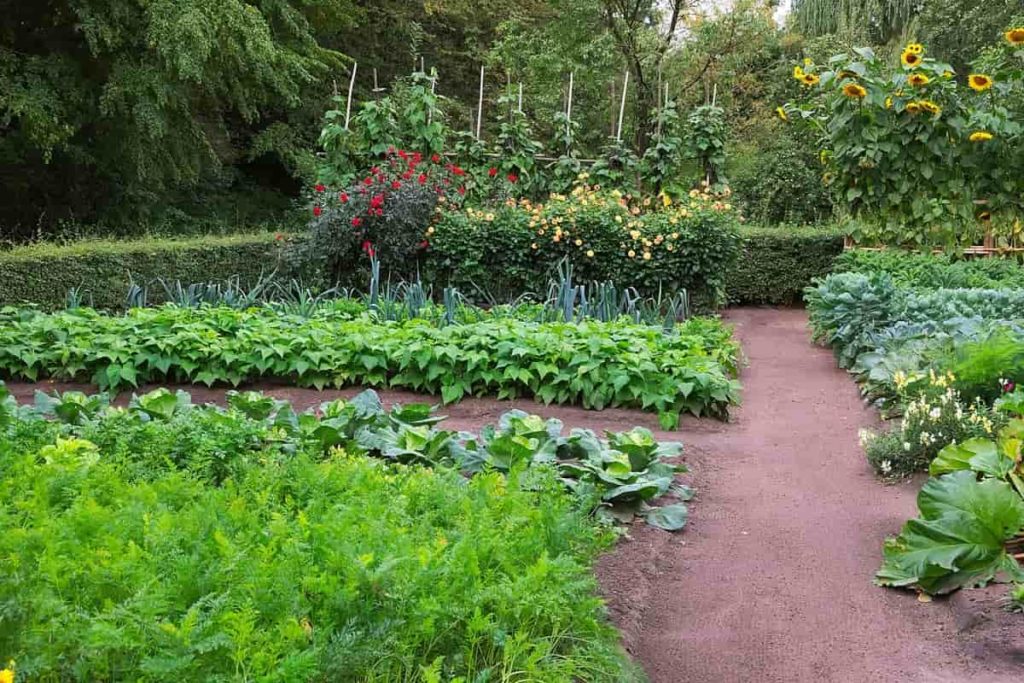
How can I grow plants indoors without sunlight?
Growing plants inside with LED lights have the lowest risk of injury and is the approach that may be altered with the greatest degree of simplicity. They produce little heat and can easily change color temperature, unlike fluorescent and HPS bulbs.
How many times a week should I water my indoor plants?
Most houseplants require feeding every ten to fourteen days throughout the growing season (spring and summer). However, you can avoid feeding your houseplants every other watering throughout the autumn and winter since they need less food during those seasons.
Conclusion
Finally, it is essential to maintain detailed notes on your home garden activities, as this will come in handy during the subsequent planting season. One of the best ways to become a better gardener is to keep careful track of your progress by documenting your accomplishments and mistakes in a notebook or diary.
- Flower Garden Designs and Layouts for Beginners
- Planting and Spacing Techniques in Papaya: A Beginner’s Guide
- Growing Gold: Essential Techniques for Planting Pineapples
- How to Make Kalanchoe Plant Bushy: Home Remedies and Solutions
- 11 Reasons Why Your Gardenia is Not Blooming: Home Remedies and Solutions
- Eco Elegance: The Guide to Designing a Drought-Tolerant Landscape
- Gardening on a Slope: Strategies for Hillside Landscaping
- Nourish and Flourish: Top Organic Mulches for Thriving House Plants
- Everything You Want to Know about Indian Mogra Flower: Discover Uses and Growing
- Green Thumb Success: Expert Tips for Cultivating Greenhouse Pumpkins All Year Round
- Maximize Growth & Flavor: The Ultimate Guide to Companion Planting in Herb Gardens
- How to Control Rhododendron Problems Naturally: Home Remedies and Organic Ways to Fix Them
- Natural Magic: The Remarkable Benefits of Cinnamon for Plants
- Best Steps to Revive Dying Tulip with Natural and Organic Treatment
- 10 Reasons Why Your Angel Trumpet is Not Blooming: Remedies and Treatment
- How to Fix Periwinkle Leaf and Flower-Related Problems: Natural Remedies and Solutions
- How to Fix Zinnias Leaf and Flower Problems: Discover Natural and Home Remedies
- Organic Steps to Induce Lemon Tree Flowers: A Comprehensive Guide
- Bloom Booster: Crafting the Perfect Homemade Bougainvillea Fertilizer
- Optimizing Growth: A Guide to Applying NPK Fertilizer for Potted Plants
- 10 Best Homemade Fertilizers for Rubber Plant: DIY Recipes and Application Method
- How to Boost Female Pumpkin Flowers: Effective Steps for More Flowers and High Yields
- Transform Your Indoor Garden: Top Benefits of Pink Salt for Houseplants
- 10 Best Homemade Fertilizers for Peacock Plants (Calathea): Easy DIY Guide
- Unlock Blooms: 9 Reasons Why Your Potted Chrysanthemum is Not Blooming
- 8 Reasons Why Your Potted Hibiscus is Not Blooming: Fix it with Simple Solutions
- Unlock Blooms: 9 Key Reasons Your Potted Frangipani Won’t Flower
- 10 Reasons Why Is My Ice Plant Not Blooming: Remedies and Treatment
- 10 Reasons Why My Potted Hydrangea Not Blooming: Treatment and Remedies
- 10 Reasons Why is My Wisteria Not Blooming: Remedies and Treatment
- 10 Reasons Why is My Goldfish Plant Not Blooming: Remedies and Treatment
- Maximize Your Space: Ultimate Guide to Balcony Gardening with Grow Bags
- 10 Reasons Why Your Iris is Not Blooming: Remedies and Treatment
- 10 Reasons Why Your Anthurium Plant is Not Blooming: Treatment and Remedies
- 10 Reasons Why Your Aquaponic Plants Are Not Flowering: Remedies and Treatment
- 10 Reasons Why Your Agapanthus is Not Flowering: Remedies and Treatment